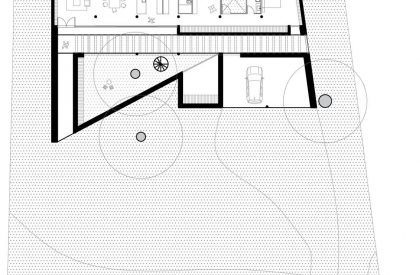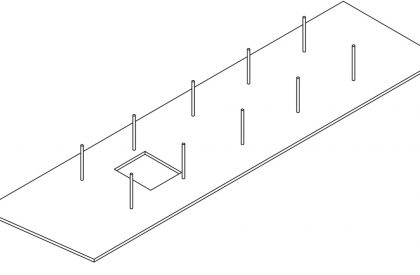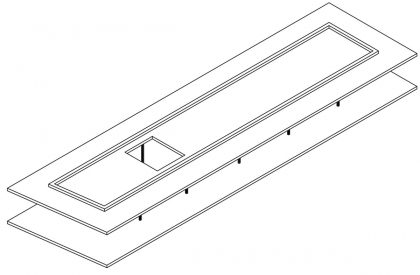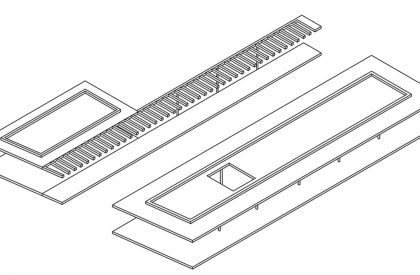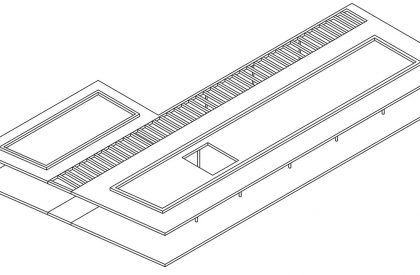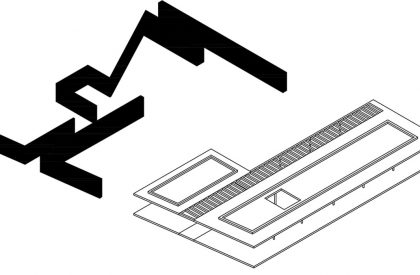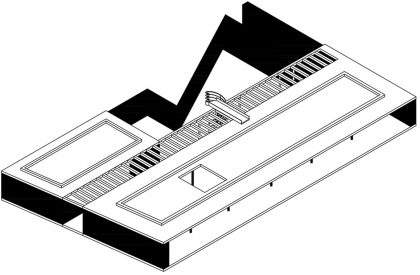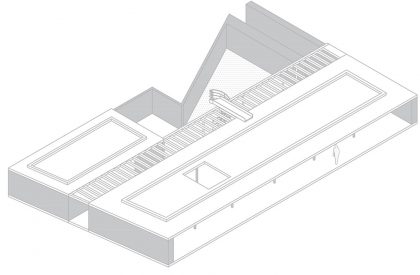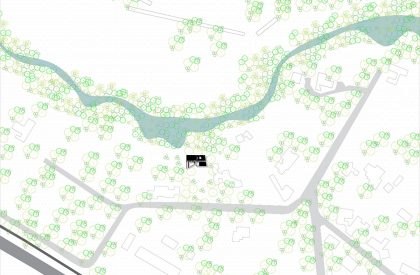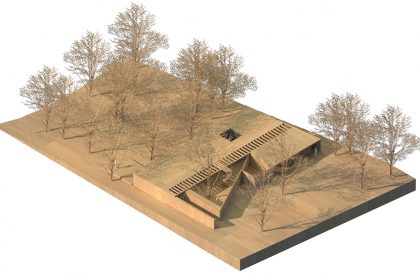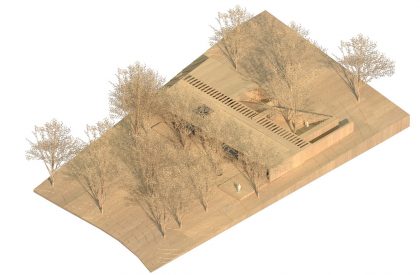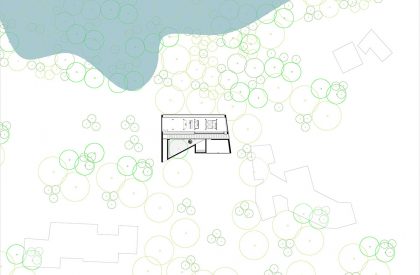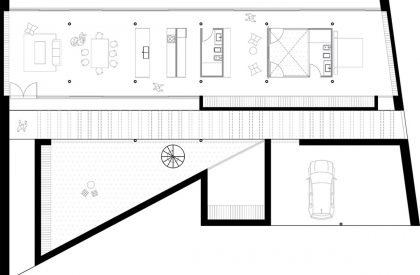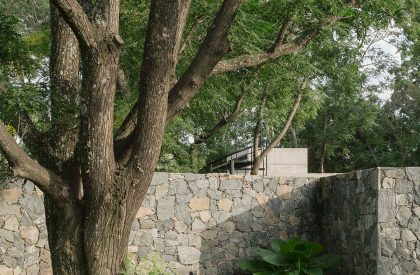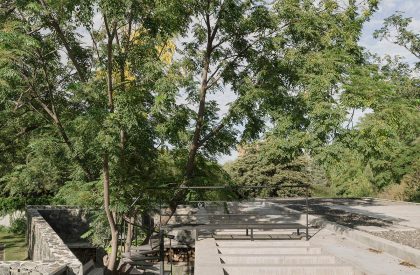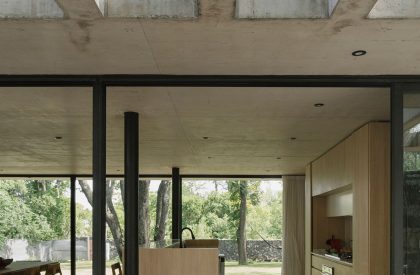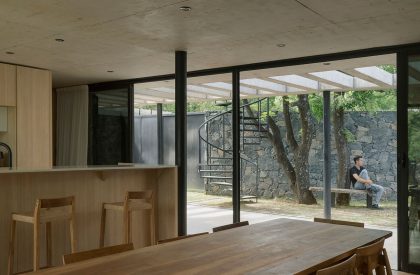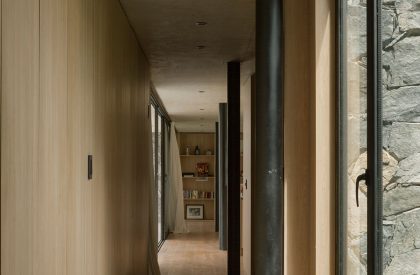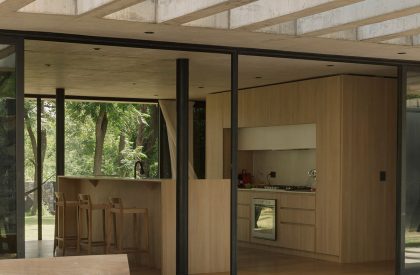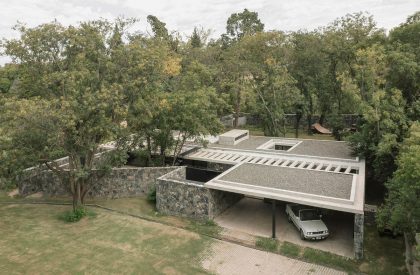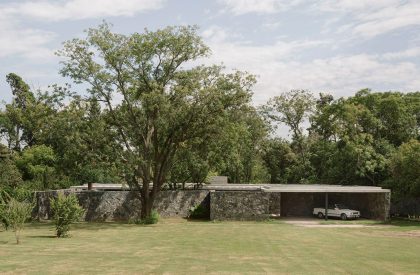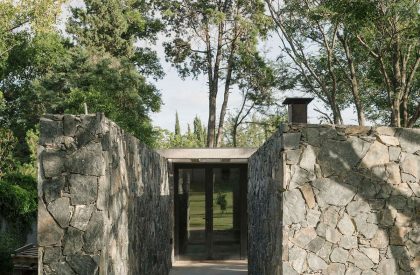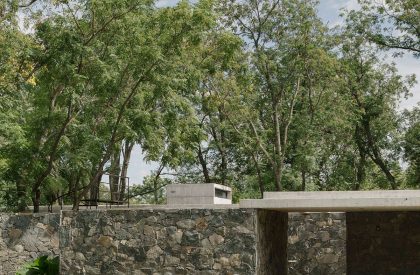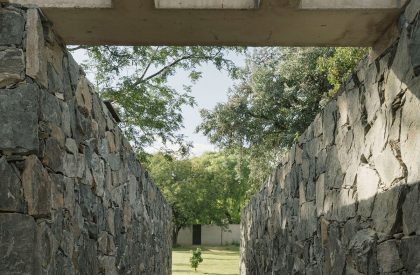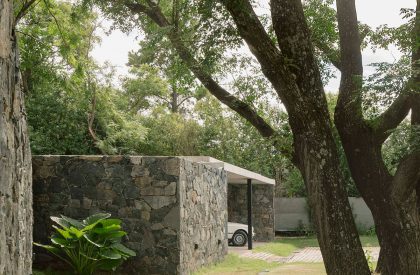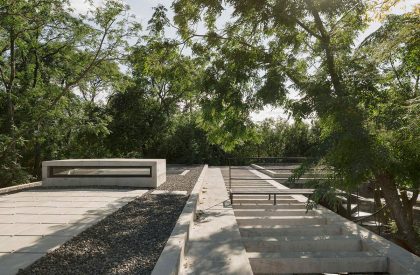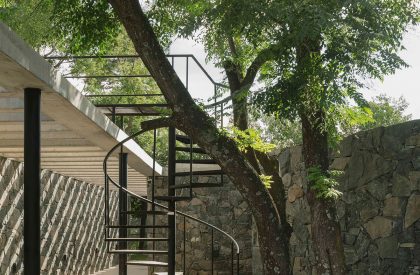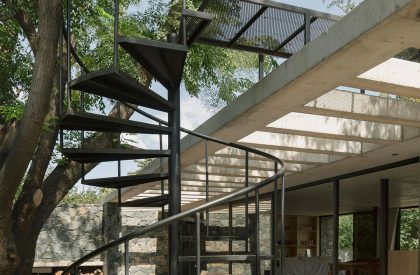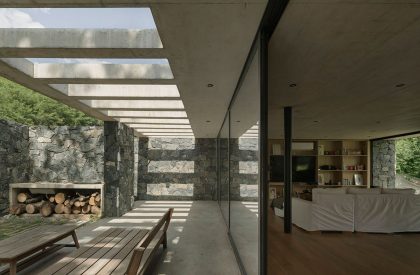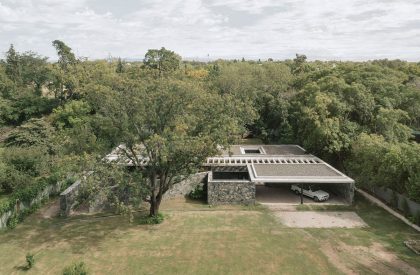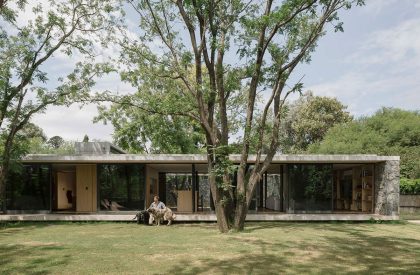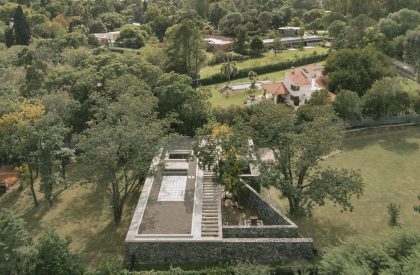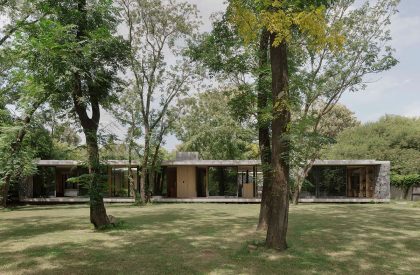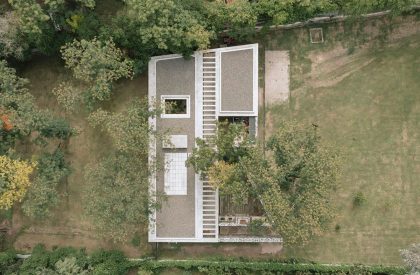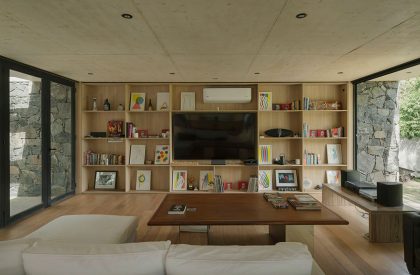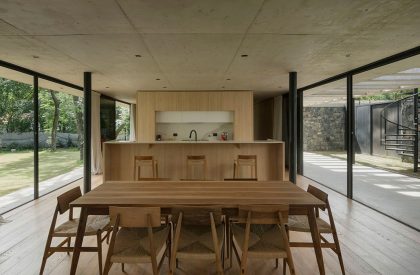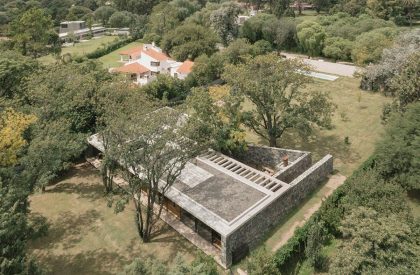Excerpt: Paradise House is a residence designed by the collaboration of architects Agustin Lozada and Gonzalo Perrote. With the premise of breaking the limits within the house, it was decided to limit the changes of uses within the same spaces. The hard chores such as kitchen, laundry, and bathrooms, function as large tablets of services that simultaneously fulfill the function of limiting the spaces inside. In this way, the flexibility that is perceived in the space is an exquisite dynamic in which various functions and uses are combined in a large container space without any interruption to the other.
Project Description
[Text as submitted by architect] Paraíso house responds to a private commission for an individual house located in Quinta Los Nores, Cordoba, Argentina. The project began in early 2019 with a visit to the lot, where we were particularly surprised by the enormous amount of existing vegetation of great size that possessed the land. Particularly, such vegetation was primarily located on the final part of the lot, more in relation to the river la cañada. Without any order or criterion, that is to say, it formed an irregular landscape of movement, fluid. The first reaction was to walk there, stay under that mantle of vegetation, and perceive and feel what it transmitted. There, the concept of living under this blanket arose, to place the house away from the street, take it closer to the river, and enjoy living under this unique microclimate.

Insertion/location
The house is on an irregular plot of 3600 m2, with a North-South orientation (North towards the river, South towards the street). In this regard, within the multiple possibilities of implantation, two possibilities were considered: the vegetation as a backdrop and curtain for the house or living under the vegetation, rescuing that particular microclimate generated by being under these large canopies.
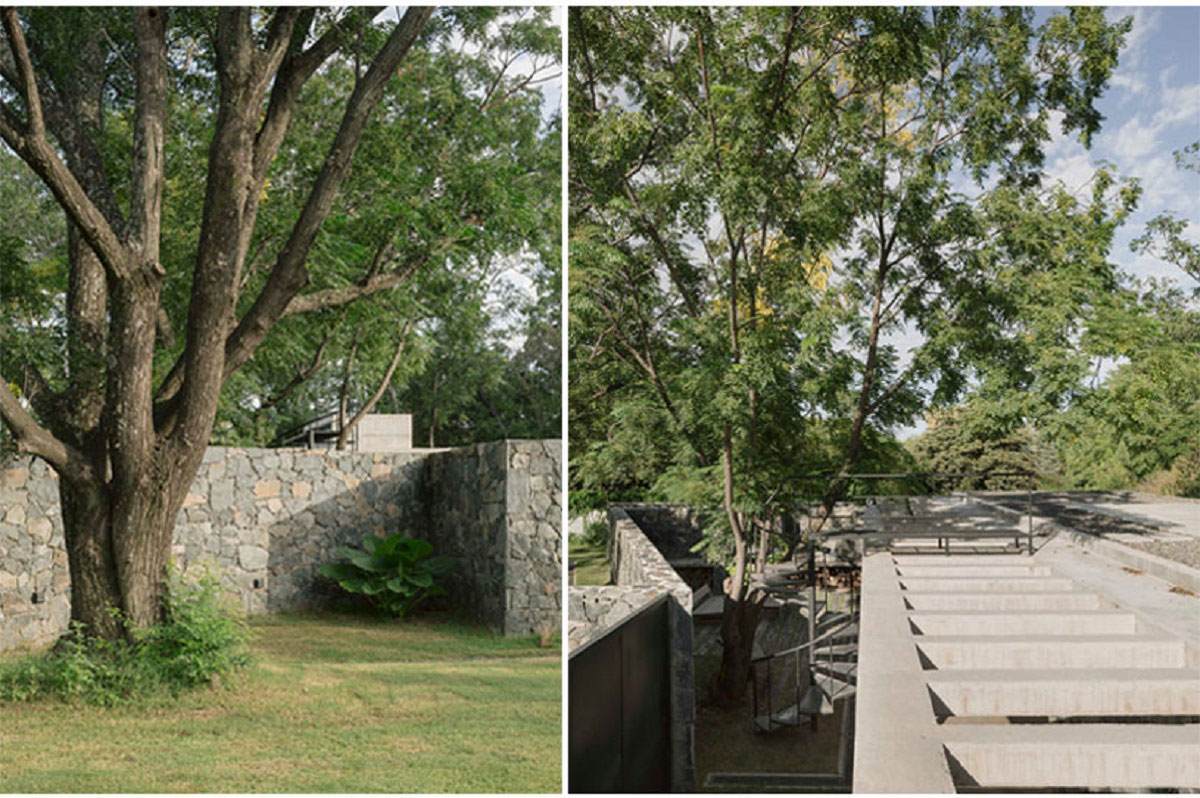
In relation to this, we chose to develop the premise of living under that natural forest of large trees (mainly Paradise type) while following the impulse of that first visit to the site. In this way, the house occupies the total length of the lot (respecting the regulations of 3 meters retreat from party walls on each side). It opens in its entirety with large glass carpentry from end to end in relation to this garden, below and at the border.
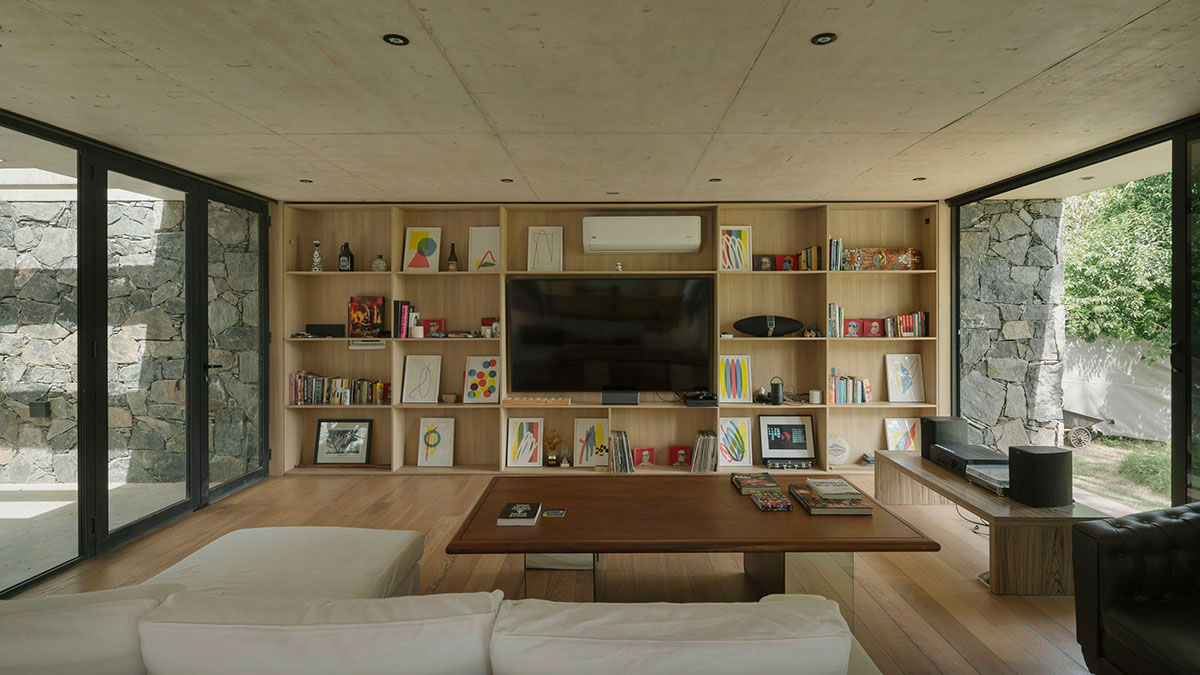
The existing vegetation
In relation to the South, the house is closed with a large perimeter wall that copies the irregular shape of the vegetation site, thus generating a close relationship with a private courtyard, which is approached with a small ramp that copies the slope of the natural ground to reach a large reinforced concrete bellows-pergola – which runs from end to end of the house, as a transition between inside and outside.
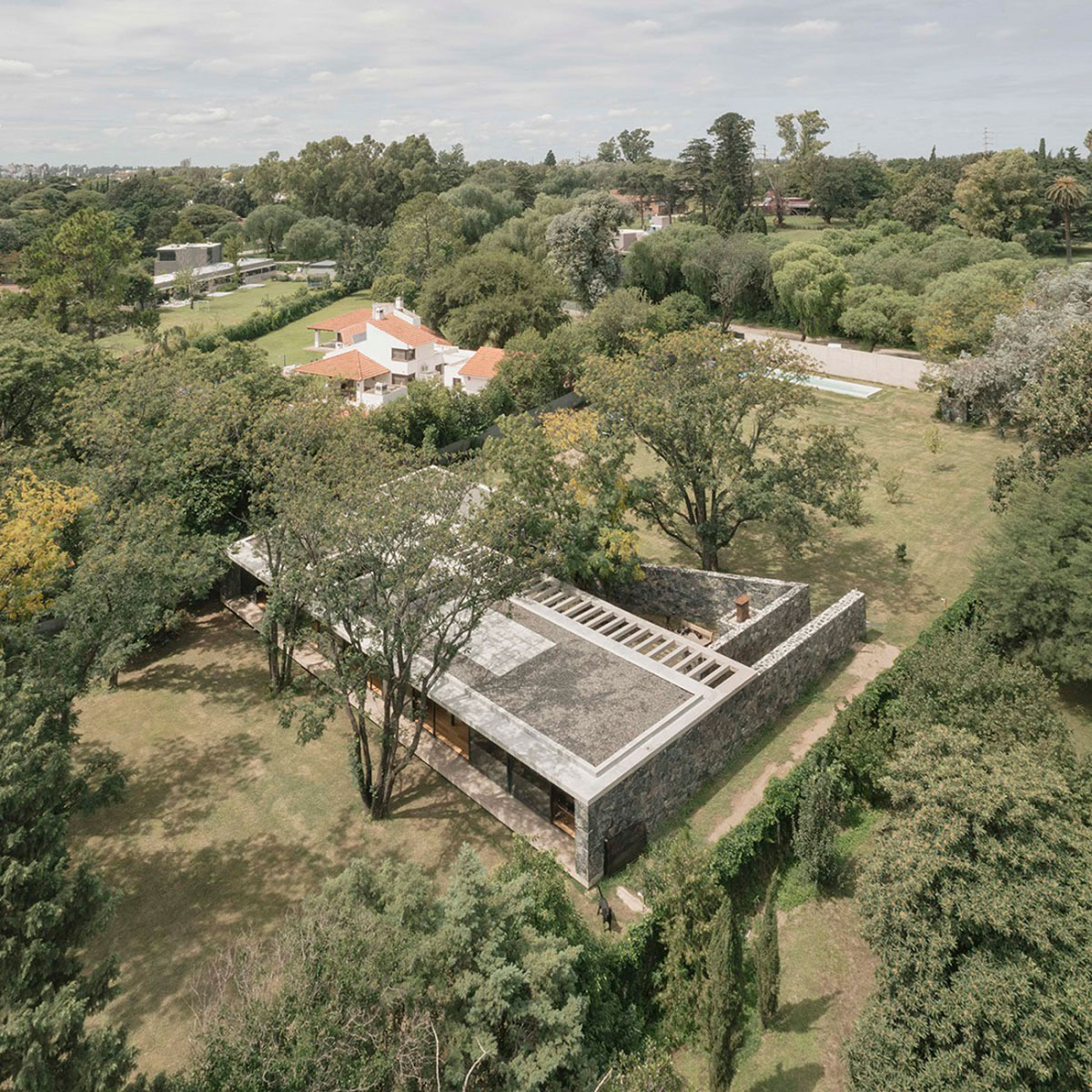
A large concrete roof
Under the concept of living under a large enabling roof, that is, one that allows the function to accommodate over time different requirements and uses. Thus, arises the idea of locating a large slab of 27 meters long by 8 meters that rests on 10 circular metal columns of 140 mm. The slab is complemented by another smaller area from a large concrete pergola, which functions as bellows and as a transition space between inside and outside.
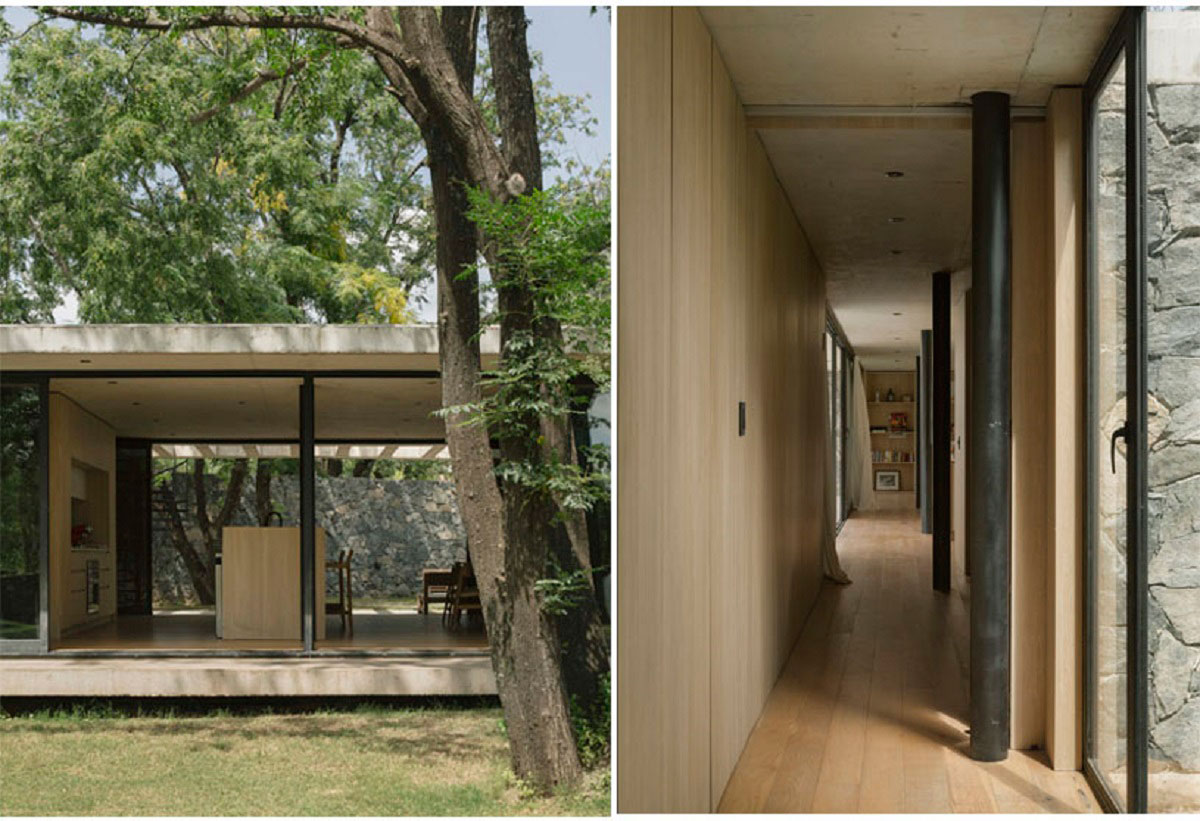
Under this cover, an ample continuous space without limits is developed. With the premise of breaking the limits within the house, it was decided to limit the changes of uses within the same spaces. The hard chores such as kitchen, laundry, and bathrooms, function as large tablets of services that simultaneously fulfill the function of limiting the spaces inside. In this way, the flexibility that is perceived in the space is an exquisite dynamic in which various functions and uses are combined in a large container space without any interruption to the other. At the same time, all the spaces have a constant connection with the exterior landscape, thus diluting the limits between inside and outside, achieving a spatial continuity that extends the uses of the house.
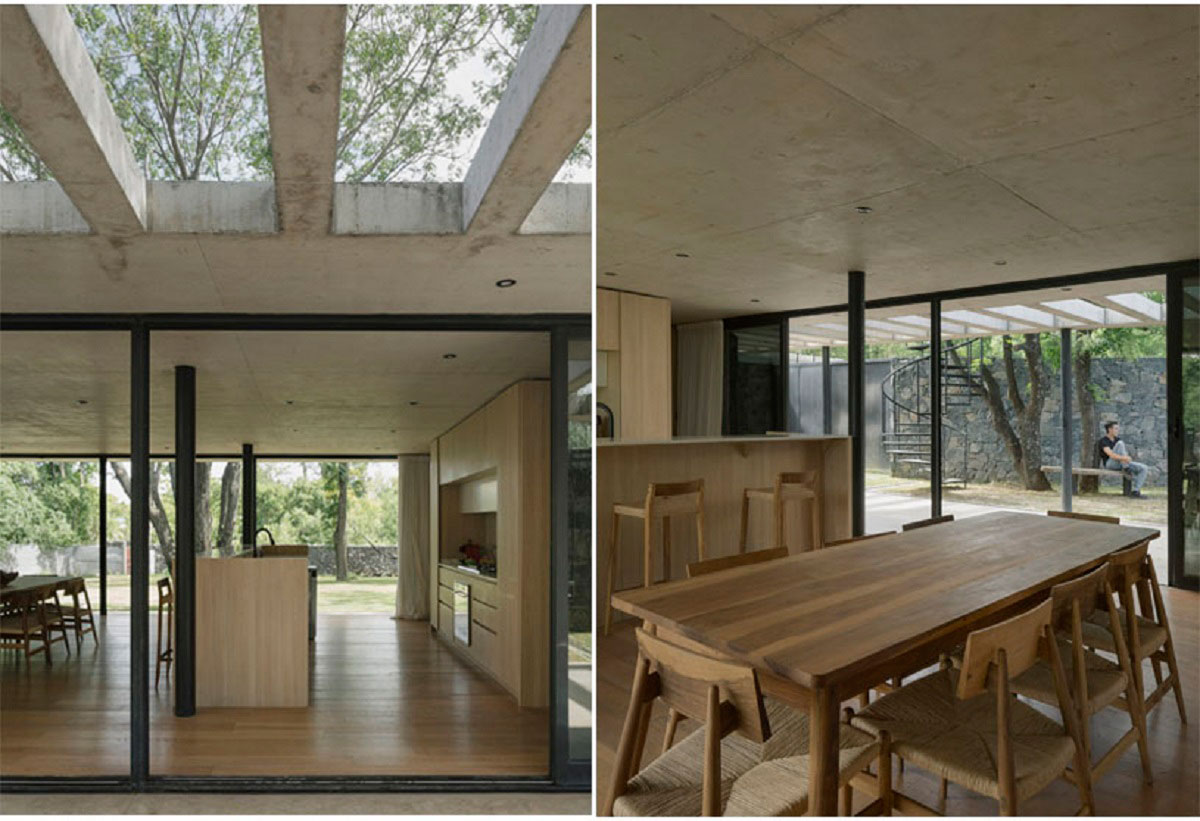
On the other hand, the roof is also understood as a support and an enabler to extend the use of the ground. The roof allows the house to inhabit it from another perspective, allowing us to be and walk among the treetops, achieving a different relationship with the landscape. For this, we propose a large accessible deck accessed from a subtle circular metal staircase. The deck from a bridge connects the first floor with the accessible terrace of granite—a staircase to tranquility, enjoyment, and connection with nature.
An enabling wall
The large concrete cover is linked and anchored to the ground from a large continuous stone wall that takes the slopes of the lot itself, thus reflecting those ideas arise and refer to what the context gives us. In this case, one of the sides of the lot has a slope. Therefore, the wall lies on it to allow itself to copy nature’s lines and include the existing trees within the house. This is why the wall extends outside the home itself and enables the formation of a courtyard, which recreates a landscape for contemplative, private use. At the same time, it houses the existing vegetation and the circular staircase that connects the earth and the sky.
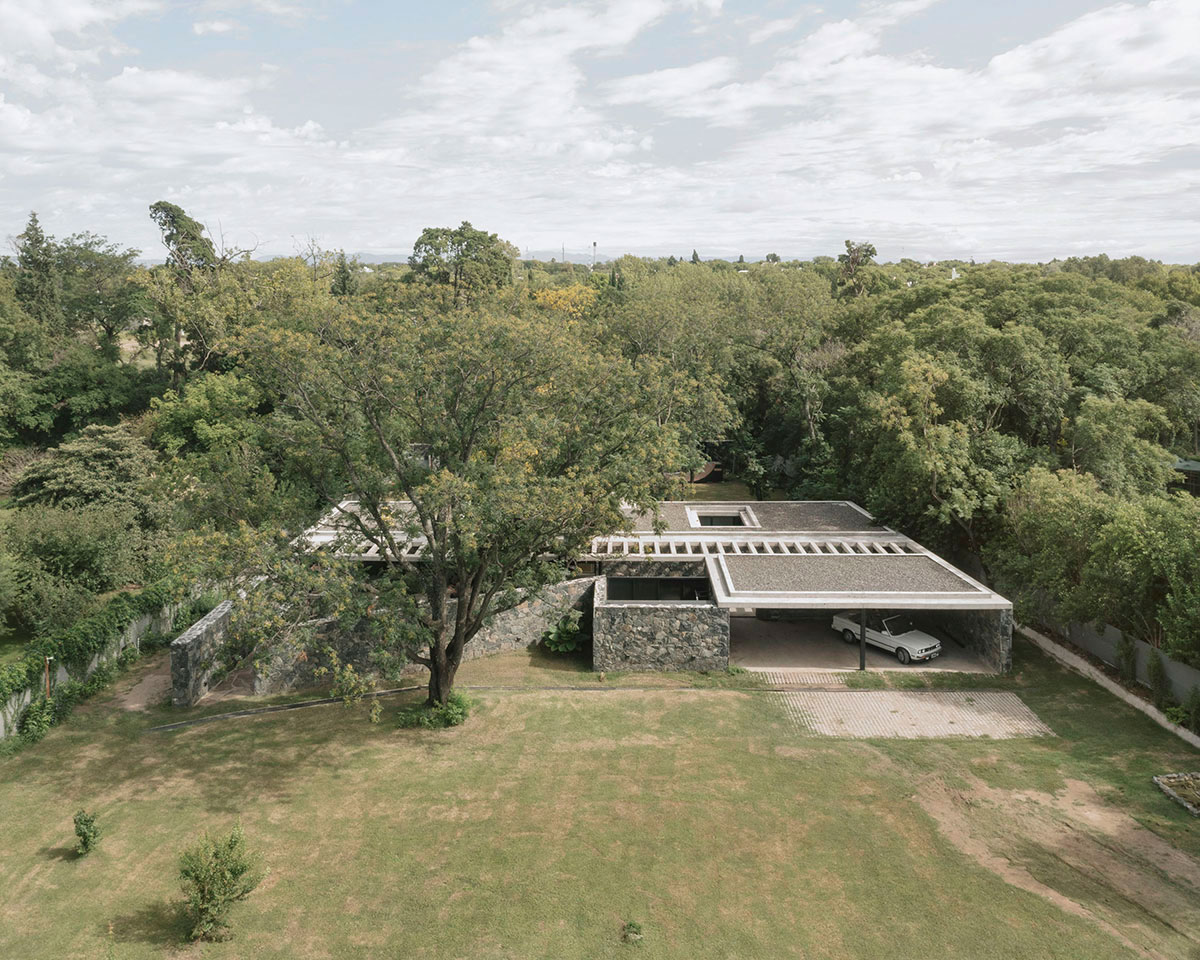
At the same time, this enabling wall acquires the capacity to house programs. In this way, the wall goes from being an element that separates to being an element that contains and has a thickness. That is why, in different passages of the house, the wall acquires the capacity to be the element that frames the entrance and then becomes a library, a storage room, a barbecue, etc.

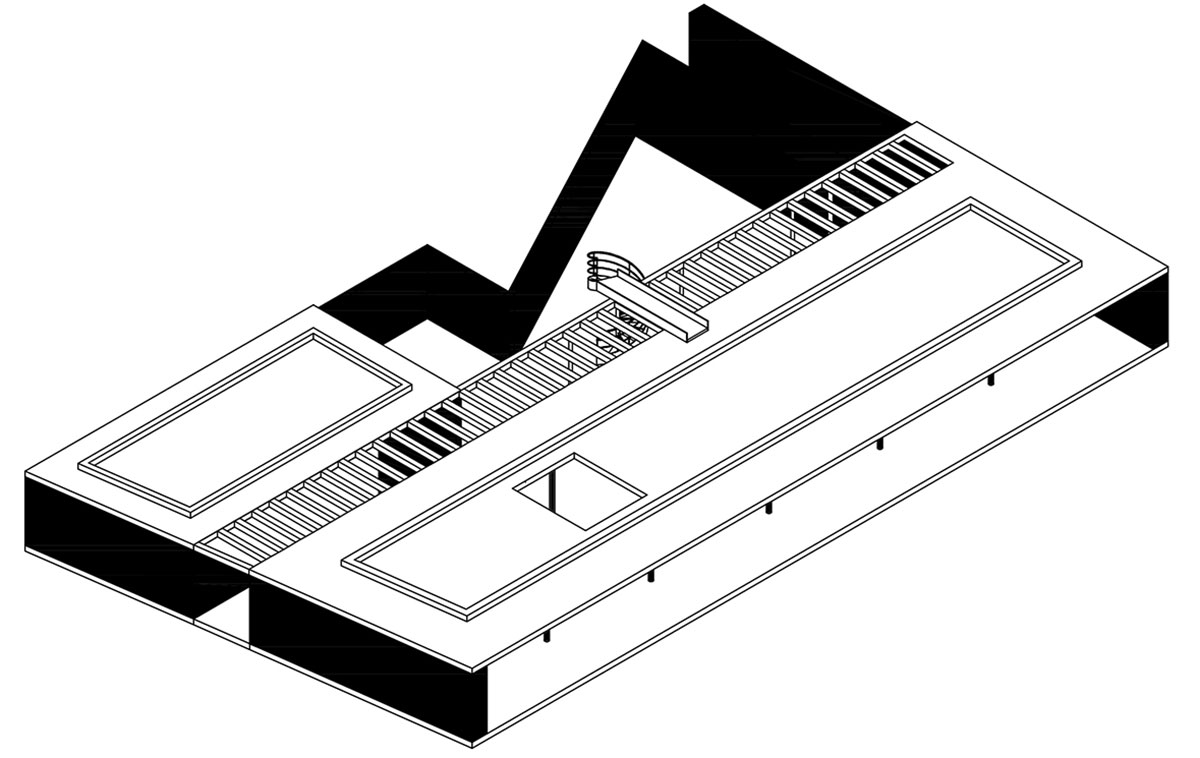
The technique and the material
In relation to these points, the construction is consistent with the resulting space. In this way, we sought that the technique would allow us to achieve a large continuous space, without rigid limits, on the contrary, flexible. The large concrete roof is supported by an independent structure of circular metallic columns, freeing the different enclosures from a dry construction, allowing the house’s adaptability in the future.
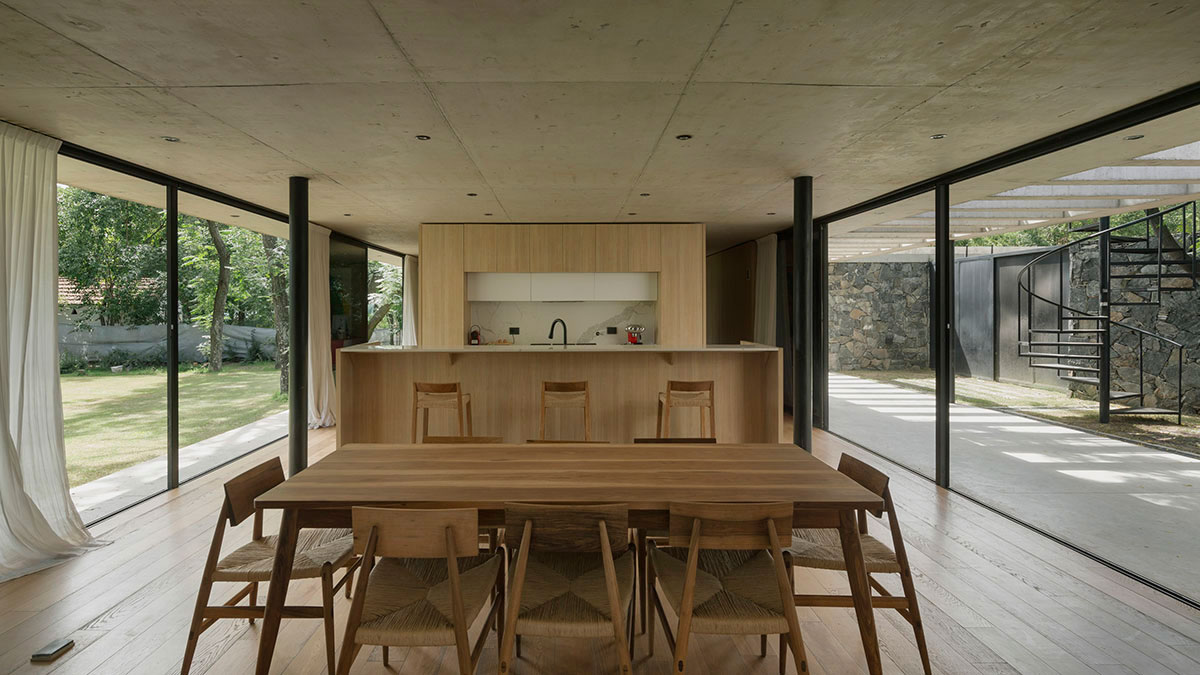
On the other hand, in relation to the material, the work is contextualized, and local materials are used. The choice is made to enhance and revalue those traditional materials/construction processes of Cordovan architecture, such as the stone pircas. An element frequently used to delimit areas to generate limits/frontiers. In this case, the boundary between public and private is worked from these elements and reinterpreted for domestic use.

On the other hand, the relationship between technique and material. It is emphasized in the use of reinforced concrete, taking care of the modulations of its phenolics and the constructive resolutions to achieve different types of encounters, such as the encounter between the house and the floor or the house and the sky. In both cases, inverted beams are formed at the same time as the slabs to ensure the creation of the same horizontal plane, both on the ground and on the rooftoP.

